
Quantum Efficiency Tester
PL/EL Integrated System
PV-Reflectumeter
3D Confocal Microscope
In-Line Four Point Probe Tester
Four Point Probe Tester
In-Line Thin Film Thickness Tester
Raman Spectrometer
FTIR Spectrometer
Spectrophotometer
Automatic Spectroscopic Ellipsometer
Contact Resistance Tester
Ultra depth of field 3D microscope
Auto Visual Tester
VMM PV Vision Measuring Machine
Solar Cell Horizontal Tensile Tester
Steady State Solar Simulator for Solar Cell
Solar Cell UV Aging Test Chamber
Solar Cell Comprehensive Tensile Tester
Visual Inspection Tester
Wet Leakage Current Tester
PV Module EL Tester
PV Module UV Preconditioning Chamber
Steady State Solar Simulator for PV Module
Current Continuous Monitor
Potential Induced Degradation Test
Bypass Diode Tester
LeTID Test System
Reverse Current Overload Tester
Impulse Voltage Tester
Hipot Insulation Tester
Ground Continuity Tester
Hipot Insulation Ground Tester
Damp Heat Test Chamber
Humidity Freeze Test
Thermal Cycle Test Chamber
Dynamic Mechanical Load Tester
Static Mechanical Load Tester
Hail Impact Tester
Robustness of Termination Tester
Module Breakage Tester
Cut Susceptibility Tester
Peel Shear Strength Tester
Universal Testing Machine (Single-arm)
Universal Testing Machine (Double-arm)
Glass Transmittance Tester
Acetic Acid Test Chamber
EVA Degree of Crosslinking Test System
Junction Box Comprehensive Tester
Drop ball tester
Semi-automatic scanning four-probe tester
Stylus Profilometer
Maximum Power Point Tracker
Perovskite Glass Transmittance Tester
Perovskite P1 Laser Scribing Multifunctional Testing Machine
Perovskite Online PL Tester
Perovskite Online Sheet Resistance Tester
Online Perovskite Film Thickness Tester
Perovskite Process Inspection Workstation
Portable IV Curve Tester
Portable EL Tester
Portable Thermal Imaging Tester
Solar Module Multi-Channel Testing System
PV Inverter Power Quality Tester
Drone EL Tester
IV Tester
IVEL Cell Sorting Machine
Effects of Optical and Electrical Properties of ITO Films of Different Thicknesses on Cell
Date : 2024-09-23Views : 215
ITO has been widely used in the field of solar cells due to its high transmittance and conductivity. The thickness of the ITO film has a significant impact on its optical properties. As the film thickness increases, the transmittance in the near-infrared region decreases, and the reflectance increases slightly at wavelengths higher than 1900nm. Millennial Solar UVN2800 Spectrophotometer was used to collect reflectance and transmittance data of ITO films, which provides strong support for analyzing the efficiency of solar cells.
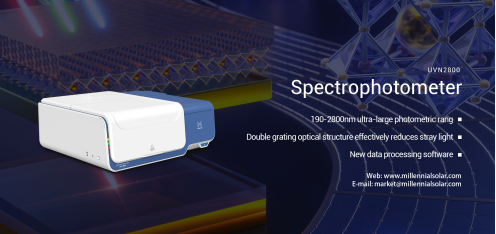
The preparation of ITO thin film needs to consider factors such as high transmittance, low resistivity, and reasonable film thickness. This requires the collection of optical and electrical performance data of different film thicknesses in order to design an ITO thin film with reasonable parameters.
Optical properties of ITO films with different thicknesses
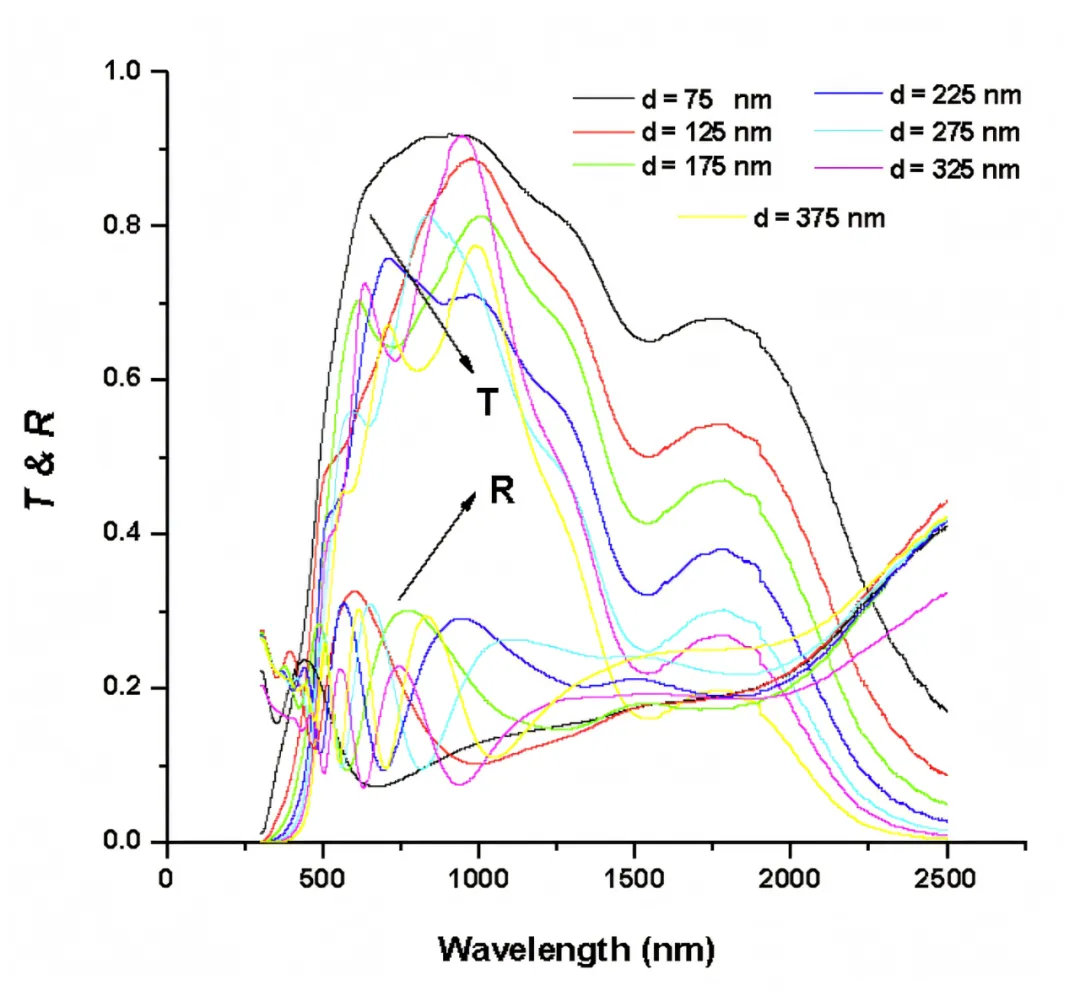
Transmittance and reflectivity of ITO films with different thicknesses
Use a double-beam spectrophotometer to measure the relationship between light transmittance (T) and wavelength of ITO films of different thicknesses:
Light transmittance decreases as film thickness increases, especially in the near-infrared region. In the near-infrared region, due to the interaction between a large number of free electrons in the film and the incident light, the light is polarized, which significantly reduces the transmission spectrum and affects the dielectric constant. The transmittance is highly dependent on the thickness of the prepared ITO film.
Also use a double-beam spectrophotometer to measure the relationship between reflectance (R) and wavelength of ITO films of different thicknesses:
Reflectance spectra show a slight increase in reflectance for light with wavelengths above 1900nm. However, this is not consistent with the decrease in transmittance in the same area. The decrease in transmittance with increasing thickness in the near-infrared region is attributed to free carrier absorption, which is common in all high carrier concentration transparent conductors.
To sum up, the transmittance of an ITO film is negatively correlated with the film thickness, while the reflectance changes relatively little with the film thickness in a specific wavelength range.
Electrical properties of ITO thin films
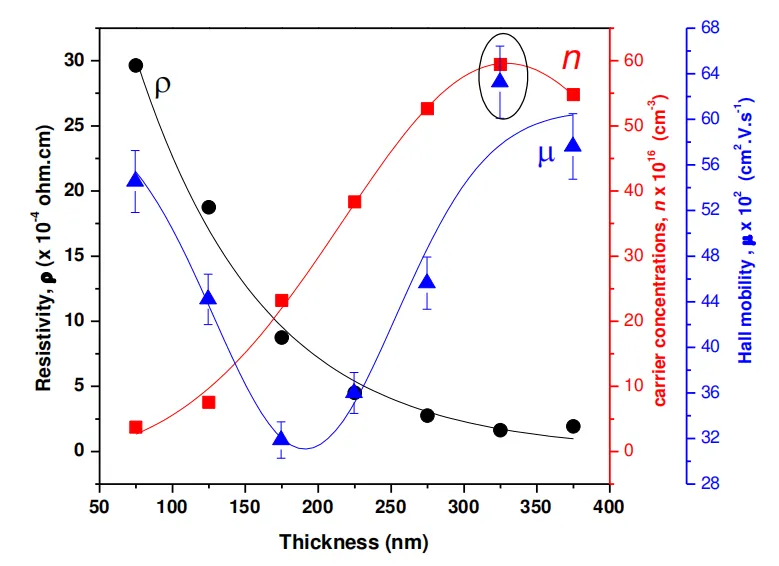
Relationship between resistivity and thickness of ITO film
The electrical properties of ITO films of different thicknesses were measured using the standard four-point probe method. As can be seen from the figure, as the thickness of the ITO film increases from 75 nm to 375 nm, the resistivity decreases from 29×10⁻⁴Ω/cm to 1.65 x10⁻⁴Ω/cm. The decrease in resistivity leads to a relatively high charge carrier density, which in turn causes a change in mobility.
The thickness of the ITO film has an important influence on its electrical properties. The resistivity decreases with increasing thickness, and ITO films with lower resistivity are more conducive to improving the efficiency of solar cells.
Effect of ITO film thickness on solar cell performance
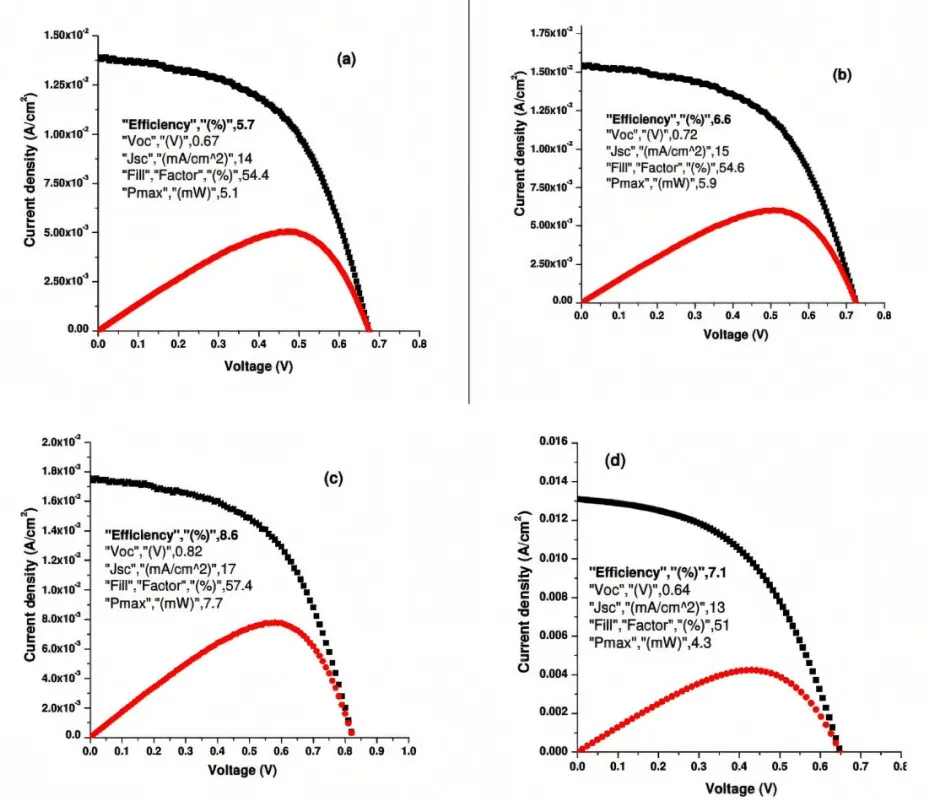
Characteristic curves of solar cells at (a) d = 75nm (b) d = 225nm (c) d = 325nm (d) d = 375nm
When d=75nm: the efficiency is 5.7%, the open circuit voltage (Voc) is 0.67V, the short circuit current density (Jsc) is 14mA/cm², the fill factor (FF) is 54.4%, and the maximum power (Pmax) is 5.1mW.
When d=225nm: efficiency is 6.6%, Voc is 0.72V, Jsc is 15mA/cm², FF is 54.6%, Pmax is 5.9mW.
When d=325nm: the highest efficiency is 8.6%, Voc is 0.82V, Jsc is 17mA/cm², FF is 57.4%, and Pmax is 7.7mW.
When d=375nm: efficiency is 7.1%, Voc is 0.64V, Jsc is 13mA/cm², FF is 51%, Pmax is 4.3mW.
It can be seen from the figure that as the thickness of the ITO film increases, the performance of the solar cell first increases and then decreases. When the ITO film thickness is 325nm, the solar cell has the best performance. This shows that the thickness of the ITO film has an important impact on the performance of solar cells, and appropriate ITO film thickness can improve the photoelectric conversion efficiency of solar cells.
As the thickness of the ITO film increases, the transmittance decreases in the near-infrared region, especially the NIR region. The transmittance is highly dependent on the thickness of the prepared film, and the thickness of the ITO film has a significant impact on its transmittance and reflectance.
Spectrophotometer
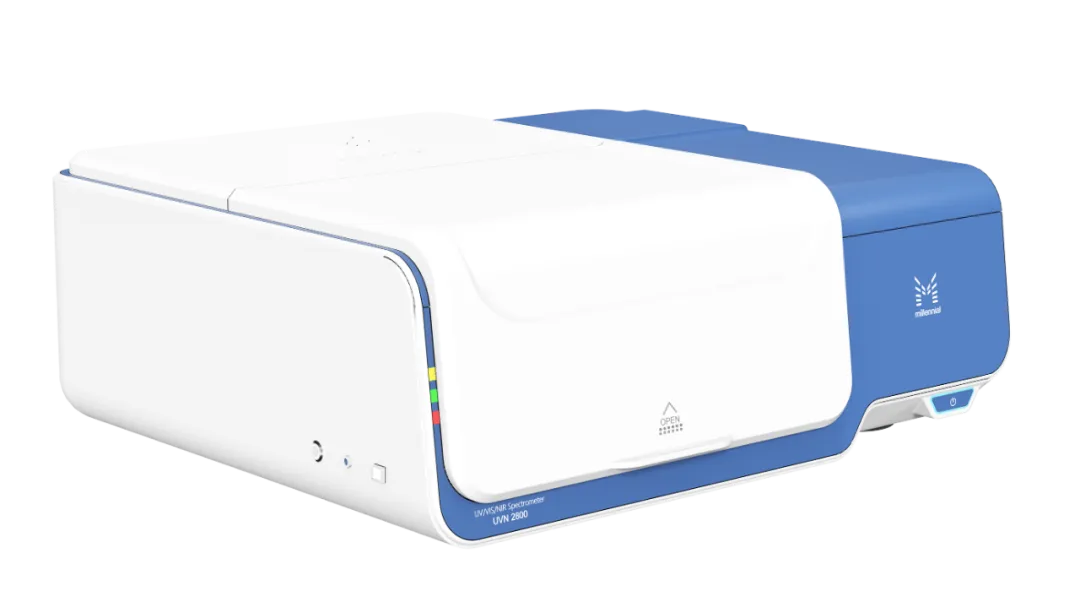
E-mail: market@millennialsolar.com
Spectrophotometer is mainly used in the photovoltaic field to measure the reflectivity and transmittance of TCO, amorphous silicon, microcrystalline silicon and other thin film materials. The most widely used is ITO film. The entire equipment adopts a unique dual-beam optical design, which can perfectly correct the absorbance changes of different sample matrices, with wide testing range, high precision and good stability.
·Using dual light source and dual detector design, wavelength range 190-2800nm
·Double grating optical structure effectively reduces stray light
·The diameter of the integrating sphere can reach 100mm, and the reflectivity of the coating in the visible area is better than 99%
The thickness of ITO film has a significant impact on its optical properties, including transmittance, reflectivity, absorption coefficient and optical band gap. These changes are related to factors such as the microstructure, crystal quality and carrier concentration of the film. Spectrophotometer UVN2800 can fully meet the needs of collecting reflectance and transmittance data of ITO films in the full band of 190-2800nm, and is widely used in the photovoltaic industry.

































































